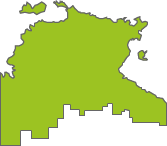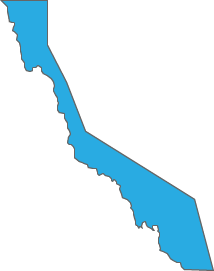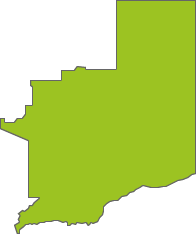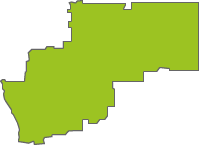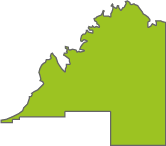Announcements
16 Mar 2025
Hello NatureMaprs!Three new priority species lists of exotic freshwater and terrestrial invertebrates, and vertebrates in the ACT have been added to NatureMapr. Uploading records of these species to N...
Continue reading
NatureMapr now receives more records in NSW than ACT
NatureMapr Data Collector 6.2.1 update
Critical nature positive infrastructure update
IMPORTANT NatureMapr Data Collector 6.2.0 mobile app update
Discussion
JaneR
wrote:
49 min ago
Maybe swap the photos around ? the main photo looks likes featuring the grass
Eleocharis atricha
WendyEM
wrote:
4 hrs ago
As far as I can see the main differentiation in these species is the shape and number of spots in antemedial (AM) area. Also presence/absence of a dot or vertical line in large medial (M) patch.
G. saginaea - 2 AM spots; dot in large M spot, M spot tapers away approaching inner margin
G. sp. USNM5 - 2 AM spots, different shapes to above; dot in large M spot, M spot less tapered
G. prionsticha - 3 or 4 AM spots; M spot on costa, rest of band mostly dark with indistinct small spots
G. flavia - 3 AM spots, large on margins, small one between; 2 M spots
So above moth conforms with G. flavia
I am unsure what genus to use on NM Ian? Gymnasura or Asura ??
G. saginaea - 2 AM spots; dot in large M spot, M spot tapers away approaching inner margin
G. sp. USNM5 - 2 AM spots, different shapes to above; dot in large M spot, M spot less tapered
G. prionsticha - 3 or 4 AM spots; M spot on costa, rest of band mostly dark with indistinct small spots
G. flavia - 3 AM spots, large on margins, small one between; 2 M spots
So above moth conforms with G. flavia
I am unsure what genus to use on NM Ian? Gymnasura or Asura ??
Unverified Moth (Lepidoptera)
WendyEM
wrote:
4 hrs ago
https://bold-au.hobern.net/taxon.php?taxid=283120
Bold (Hobern) shows 4 possible Gymnasura sp 2 named (G. saginaea & G. prionsticha), 2 not (G. sp.USNM4 & G. sp.USNM5)
http://lepidoptera.butterflyhouse.com.au/arct/saginaea.html
There is also G. flavia
http://lepidoptera.butterflyhouse.com.au/arct/flavia.html
https://www.inaturalist.org/taxa/993706-Asura-flavia ???
Bold (Hobern) shows 4 possible Gymnasura sp 2 named (G. saginaea & G. prionsticha), 2 not (G. sp.USNM4 & G. sp.USNM5)
http://lepidoptera.butterflyhouse.com.au/arct/saginaea.html
There is also G. flavia
http://lepidoptera.butterflyhouse.com.au/arct/flavia.html
https://www.inaturalist.org/taxa/993706-Asura-flavia ???
Unverified Moth (Lepidoptera)
JaneR
wrote:
5 hrs ago
that area has a lot of non-native species, and it would be a major weeding exercise to reduce the shoreline area to just native species. I left it: its non-invasive. This is an end-of-season species. It gets noticed because it is so tall, but not if cattle are present. It is habitat restricted, favouring a drying habitat. Combination of soil conditions and season requirements mean it may not always be present.
Symphyotrichum subulatum
Significant sightings
- Walwhalleya subxerophila at Franklin, ACT
- Plectorhyncha lanceolata at Higgins, ACT
- Sceptridium australe at Wyanbene, NSW
- Austrochloritis abrotonus at Berlang, NSW
- Sphaeniscus atilius at Melba, ACT
- Keyacris scurra at Manar, NSW
- Sardia rostrata at Melba, ACT
- Bossiaea grayi at Kambah, ACT
- Bossiaea grayi at Kambah, ACT
- Austromiris nigronasutus at Melba, ACT
Recent activity
Rhytidoponera tasmaniensis at O'Connor, ACT
Top contributors
- AlisonMilton 15.9K
- trevorpreston 15.2K
- Hejor1 12.5K
- Tapirlord 11.2K
- MichaelBedingfield 10.7K
- RodDeb 10.1K
- Mike 9.7K
- kasiaaus 9.4K
- ConBoekel 8.5K
- KylieWaldon 8K
Top moderators
- MichaelMulvaney 54.8K
- Tapirlord 37.7K
- MichaelBedingfield 21.8K
- Liam.m 18.7K
- donhe 17K
- natureguy 15.6K
- ibaird 14.4K
- AlisonMilton 10.6K
- MatthewFrawley 9.9K
- BettyDonWood 8.2K
Explore Australia by region
Australian Capital Territory
Canberra & Southern TablelandsNew South Wales
Southern HighlandsAlbury, Wodonga
Canberra & Southern Tablelands
South Coast
Greater Sydney
Hunter Region
Central West NSW
Riverina Murray
New England
Far West New South Wales
New South Wales North Coast
Northern Territory
Top End and Big RiversCentral and Barkley





































































































































